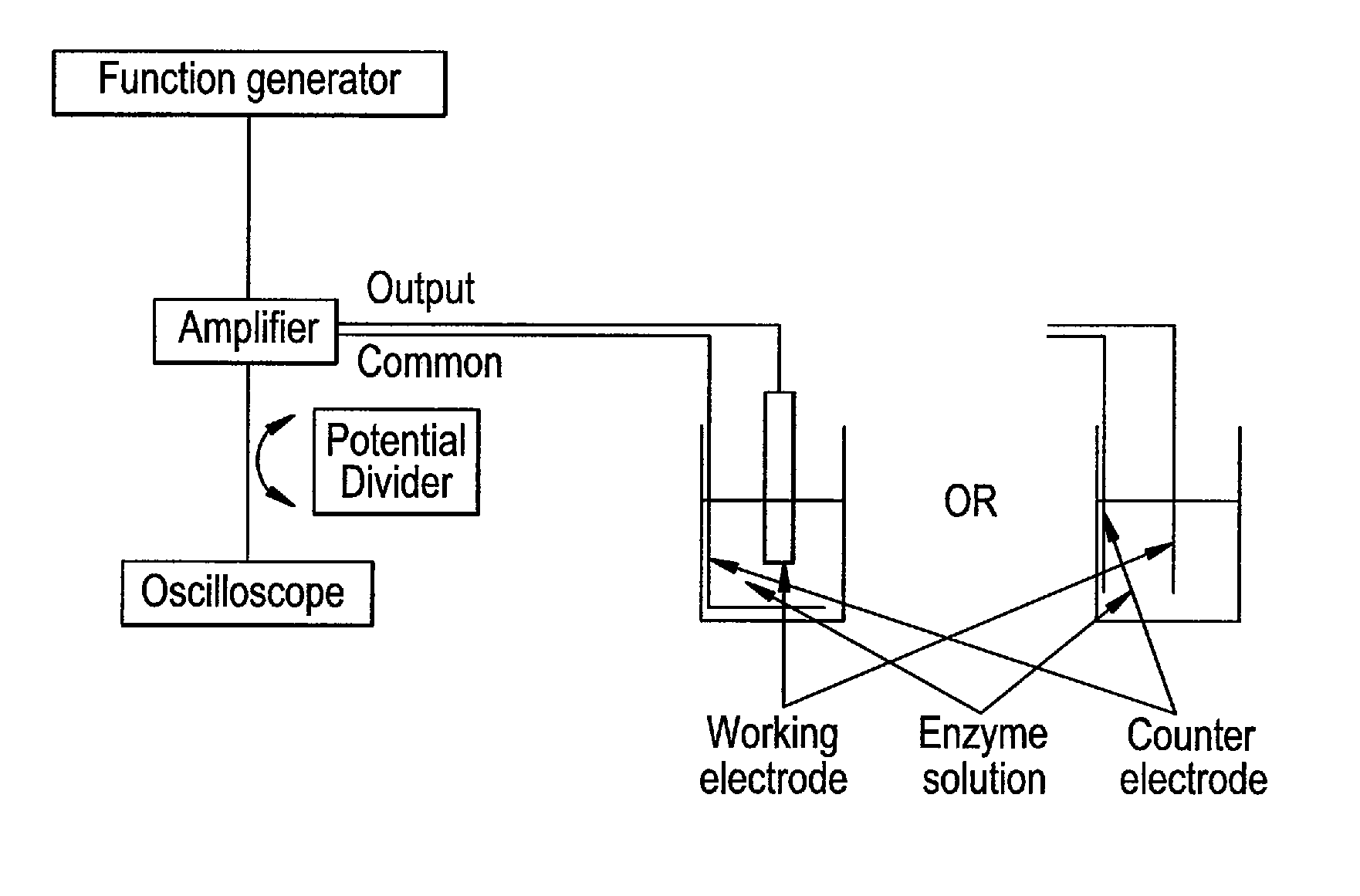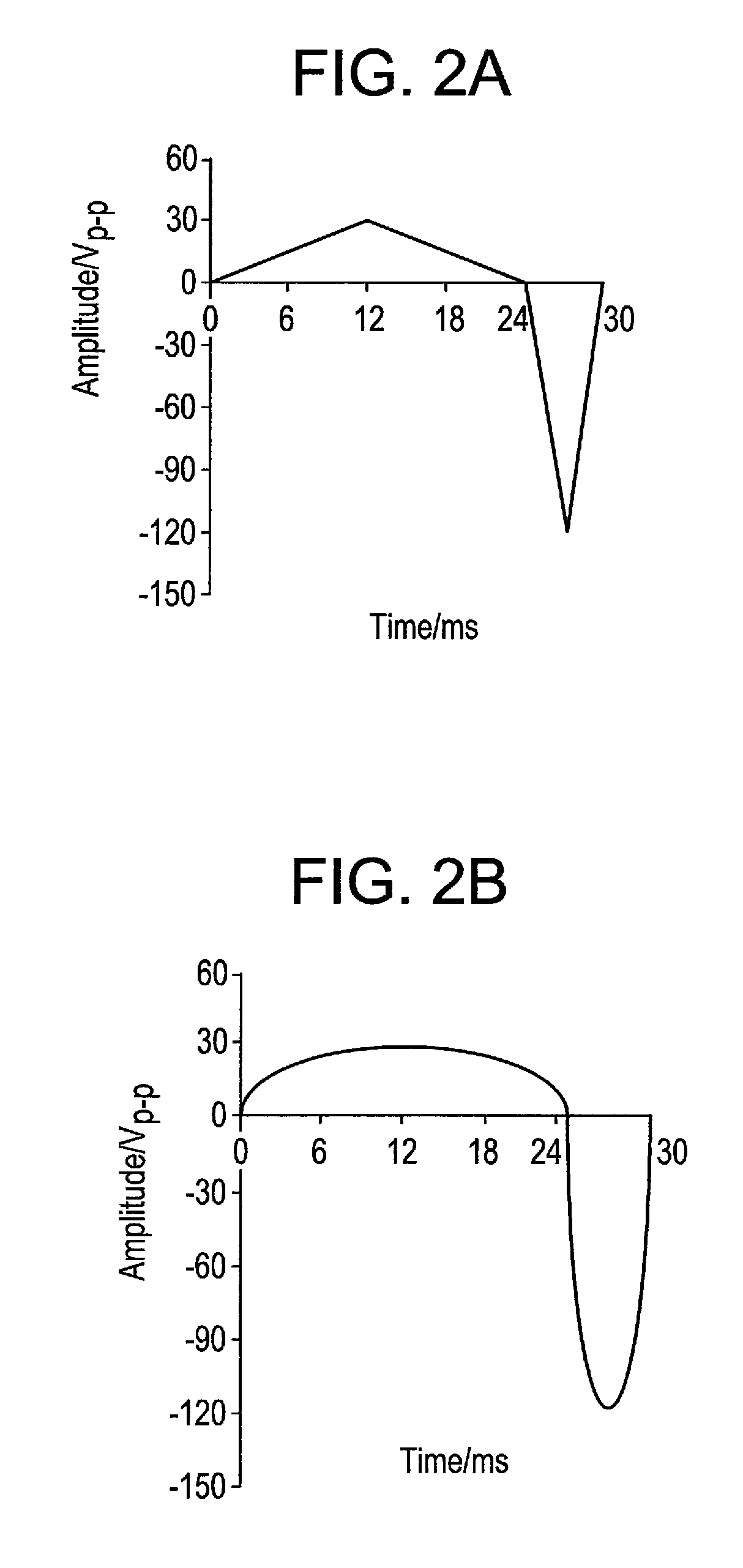Functional layers of biomolecules and living cells, and a novel system to produce such
a biomolecule and living cell technology, applied in the field of functional layers of biomolecules and living cells, can solve the problems of inability to readily adopt the formation of active thick enzymatic layer, inability to achieve dc electrical field, and inability to achieve thick active enzymatic layer, etc., to achieve the effect of preventing fibrosis
- Summary
- Abstract
- Description
- Claims
- Application Information
AI Technical Summary
Benefits of technology
Problems solved by technology
Method used
Image
Examples
example 1
Glucose Sensor
[0218]In this example, the procedure for the deposition of an enzyme is illustrated. The main parameters which influence the response to glucose and interferences are discussed in details.
[0219]The electrophoretic deposition (EPD) of the enzyme was carried out by the application of the unbalanced (asymmetrical) triangular AC signal shown in FIG. 2A, with applied parameters of 30 Hz frequency and 160 Vp-p amplitude. In FIG. 2A, one period of the AC-signal is composed of two triangular waves of opposite amplitude and with different amplitude and duration. However, the area of both triangular waves is equal, so that the signal has no net DC component, i.e. the integral of the AC-signal over one period is zero. In comparison, FIG. 2D shows a symmetrical triangular waveform.
[0220]The dispersion serving for the deposition of enzyme was prepared following this procedure: 0.05 grams of the Gox 5.6 units / mg was dissolved in a small glass tube containing 0.5 mL (ultrapure water+...
example 2
Deposition of Catalase and Glutamate Oxidase
[0236]Deposition of catalase and glutamate oxidase under unbalanced (asymmetrical) triangular AC signal, are two other examples of the deposition of enzymes according to the process of the present invention. A brief description of the manufacturing of these sensors is given.
Deposition of Catalase
[0237]0.005 grams of catalase from bovine liver were dissolved in 0.5 mL of mixture of ultrapure water with NaOH conductivity lower than 30 μS / cm. A platinum deposition electrode (surface area of 0.78 mm2) and a platinum counter electrode are immersed in a small glass tube, positioned as parallel as possible and leaving a distance between the two electrodes at around 10 mm. The unbalanced (asymmetrical) triangular AC signal (FIG. 2A) at 30 Hz and 160 Vp-p was applied for 35 min between the deposition electrode and the counter electrode. The deposition electrode was then rinsed delicately with ultrapure water. For the testing of the activity of the ...
example 3
Deposition of saccharomyces cerevisiae Cells
[0239]Bread yeast cells (Saccharomyces cerevisiae) are used as a demonstration system for the deposition of cells under AC conditions. 0.1 grams of the commercialized yeast bread were dissolved in a small glass tube containing 0.5 mL ultrapure water and a platinum counter electrode attached on the one side of the glass tube (FIG. 1). The dispersion was stirred delicately for a few minutes, and then a platinum deposition electrode was immersed and attached to the other side of the glass tube. To prevent sedimentation of the cells on the glass bottom, a very small amount of surfactant is useful. The distance between the working electrode and the counter electrode is left at around 10 mm. The unbalanced (asymmetrical) triangular AC signal (FIG. 2A) with 30 Hz and 130 Vp-p was applied for a time t to the dispersion under permanent delicate stirring. The deposition electrode was then disconnected before switching off the amplifier and rinsed ca...
PUM
| Property | Measurement | Unit |
|---|---|---|
| conductivity | aaaaa | aaaaa |
| thickness | aaaaa | aaaaa |
| thickness | aaaaa | aaaaa |
Abstract
Description
Claims
Application Information
 Login to View More
Login to View More - R&D
- Intellectual Property
- Life Sciences
- Materials
- Tech Scout
- Unparalleled Data Quality
- Higher Quality Content
- 60% Fewer Hallucinations
Browse by: Latest US Patents, China's latest patents, Technical Efficacy Thesaurus, Application Domain, Technology Topic, Popular Technical Reports.
© 2025 PatSnap. All rights reserved.Legal|Privacy policy|Modern Slavery Act Transparency Statement|Sitemap|About US| Contact US: help@patsnap.com



